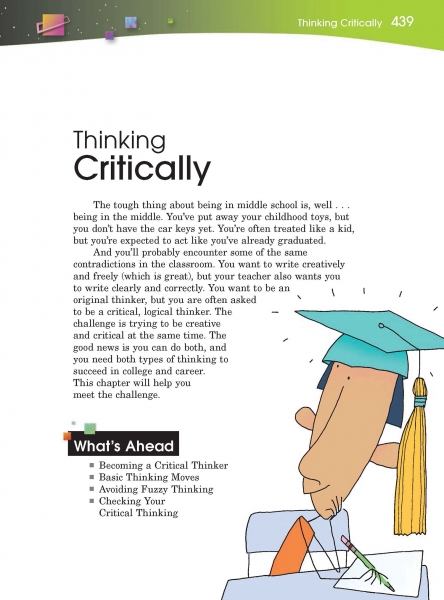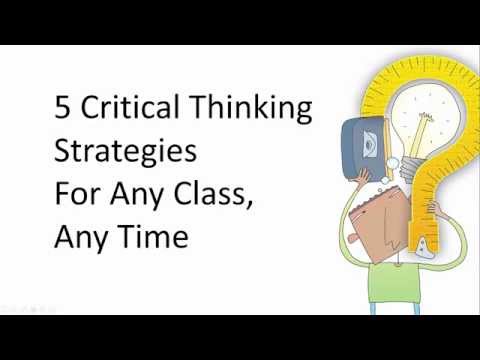Page 439 from

Start-Up Activity
To activate your students’ critical thinking, have them debate a proposed change to something at your school. An example debate question could be Should school start time be moved back by one hour? Divide your students into two teams. Have one team argue for the proposal and another team argue against it. After your debate ends, discuss the types of thinking the teams carried out.
Think About It
“Clear thinking becomes clear writing; one can't exist without the other.”
—William Zinsser

Start-Up Activity
To activate your students’ critical thinking, have them debate a proposed change to something at your school. An example debate question could be Should school start time be moved back by one hour? Divide your students into two teams. Have one team argue for the proposal and another team argue against it. After your debate ends, discuss the types of thinking the teams carried out.
Think About It
“Clear thinking becomes clear writing; one can't exist without the other.”
—William Zinsser







